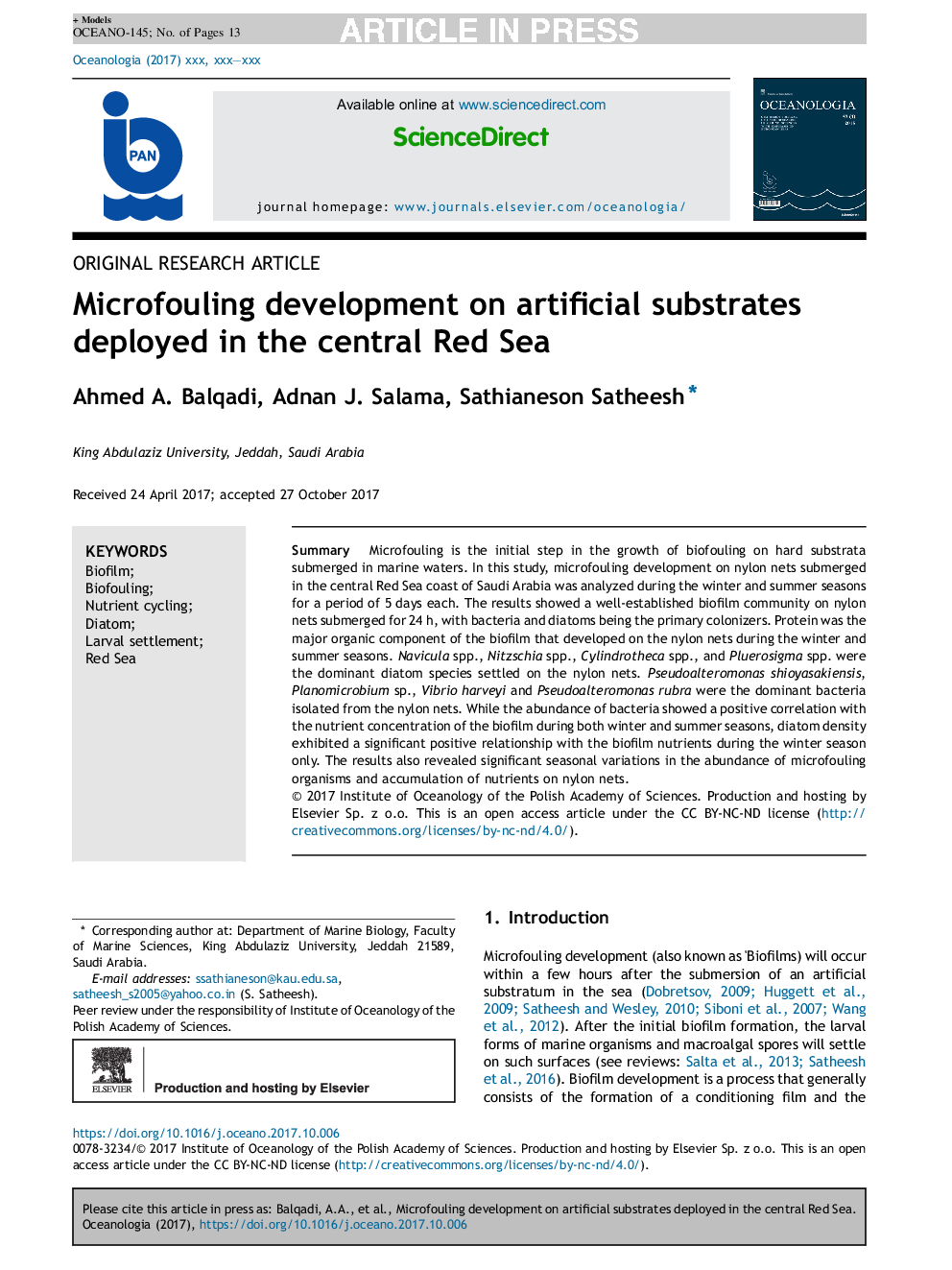| Article ID | Journal | Published Year | Pages | File Type |
|---|---|---|---|---|
| 8399850 | Oceanologia | 2018 | 13 Pages |
Abstract
Microfouling is the initial step in the growth of biofouling on hard substrata submerged in marine waters. In this study, microfouling development on nylon nets submerged in the central Red Sea coast of Saudi Arabia was analyzed during the winter and summer seasons for a period of 5 days each. The results showed a well-established biofilm community on nylon nets submerged for 24Â h, with bacteria and diatoms being the primary colonizers. Protein was the major organic component of the biofilm that developed on the nylon nets during the winter and summer seasons. Navicula spp., Nitzschia spp., Cylindrotheca spp., and Pluerosigma spp. were the dominant diatom species settled on the nylon nets. Pseudoalteromonas shioyasakiensis, Planomicrobium sp., Vibrio harveyi and Pseudoalteromonas rubra were the dominant bacteria isolated from the nylon nets. While the abundance of bacteria showed a positive correlation with the nutrient concentration of the biofilm during both winter and summer seasons, diatom density exhibited a significant positive relationship with the biofilm nutrients during the winter season only. The results also revealed significant seasonal variations in the abundance of microfouling organisms and accumulation of nutrients on nylon nets.
Related Topics
Physical Sciences and Engineering
Earth and Planetary Sciences
Oceanography
Authors
Ahmed A. Balqadi, Adnan J. Salama, Sathianeson Satheesh,
